On the Road is a weekday feature spotlighting reader photo submissions.
From the exotic to the familiar, whether you’re traveling or in your own backyard, we would love to see the world through your eyes.
It’s Albatrossity Monday, but
we’re not in Kansas anymore. Actually, that was supposed to reference the Wizard of Oz, but that reference doesn’t work very well because Albatrossity actually lives in Kansas. Oh well. In any case, we are hopping Out of Africa (another film reference) to catch some birds in flyover country, but we’ll be back in Africa next week.For the rest of the week, we have further adventures with frosty, Uncle Eb, and Dagaetch, with some special Milky Way arches courtesy of BillinGlendaleCA in between.
Albatrossity
Getting out of Africa for a week so that I can share images of some of the birds that wandered in front of my camera during spring migration and early summer. We’ll go back to the Serengeti next week; stay tuned!
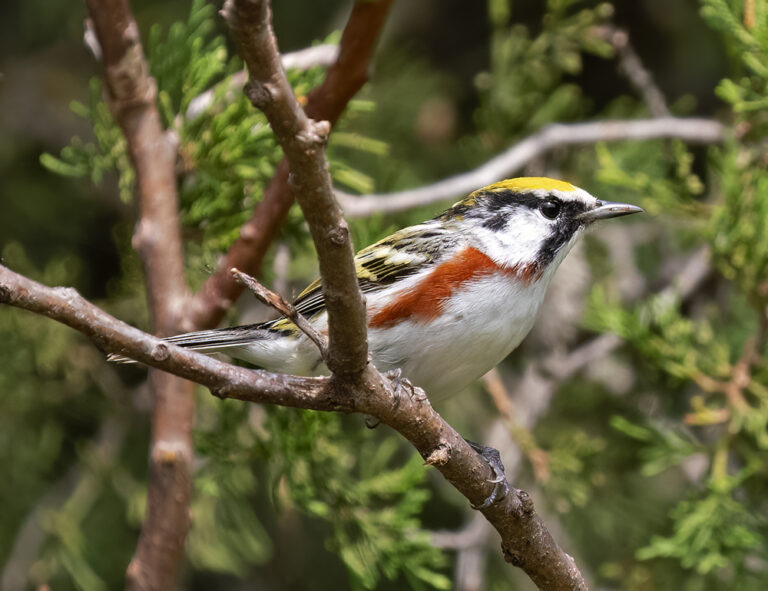
Warblers are rara avis here in my patch of Flyover Country; some of them might be damn near mythical, actually. But every year we get a few on their way north, and this year was pretty good in that regard. This colorful cutie is a Chestnut-Sided Warbler (Setophaga pensylvanica), a very familiar sight to many birders in the Northeast and the Appalachians. This is one of a very few warblers whose population has grown since the continent was overrun by European settlers, since they prefer scrubby second-growth and forest edges as nesting habitat. Click here for larger image.
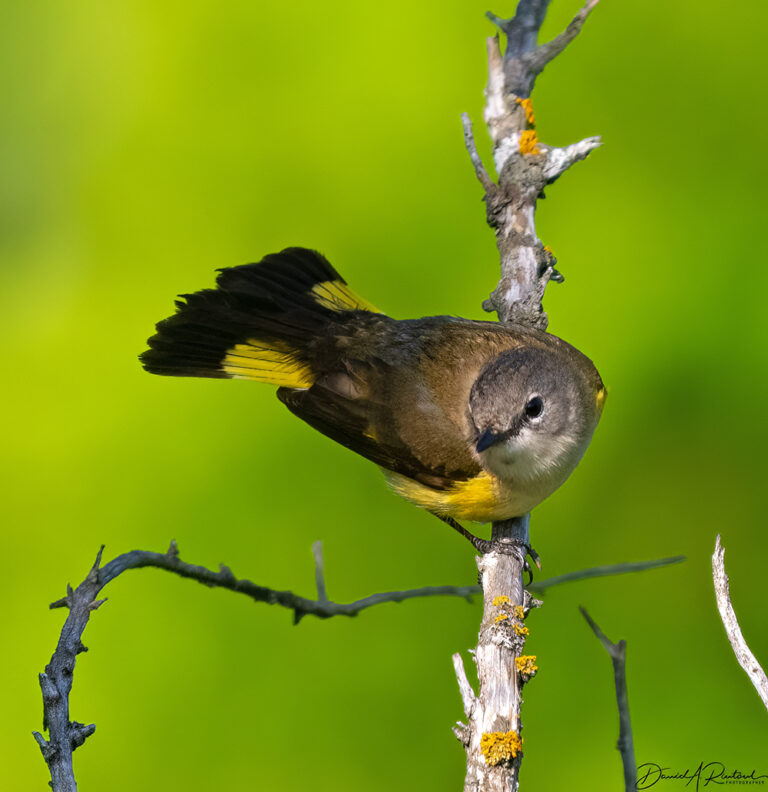
Another warbler that regularly brightens my binoculars here is the American Redstart (Setophaga ruticilla). This is a female, more subdued in coloration comparted to the make, but a flashy little number nonetheless. Again, this is a common and familiar summer sight for many birders in the eastern half of the continent, and it even is a regular breeding species along the far eastern edge of Kansas. I keep hoping to find a pair here in the summer, but so far that has not been a successful quest. Click here for larger image.
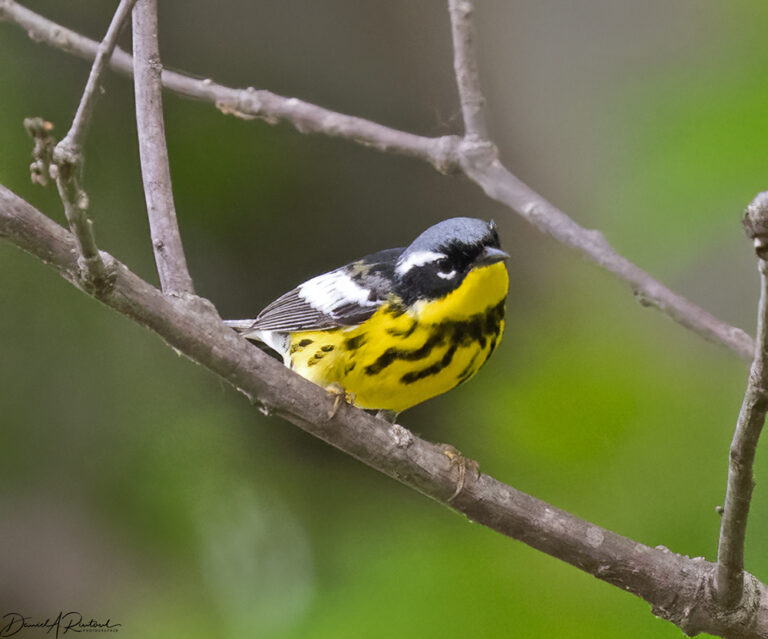
Magnolia Warblers (Setophaga magnolia) are not seen by me in my local haunts every year; I think I saw more of these during a week in March in the Yucatan than I have ever seen in Kansas. So this gorgeous alternate-plumage male was a welcome sight! It also needs to be pointed out that our lack of magnolia trees is not the reason for the scarcity of this species here. This guy was on his way to the boreal forests of the north, where he and his mate would choose a spruce or hemlock tree for a nesting site. Click here for larger image.
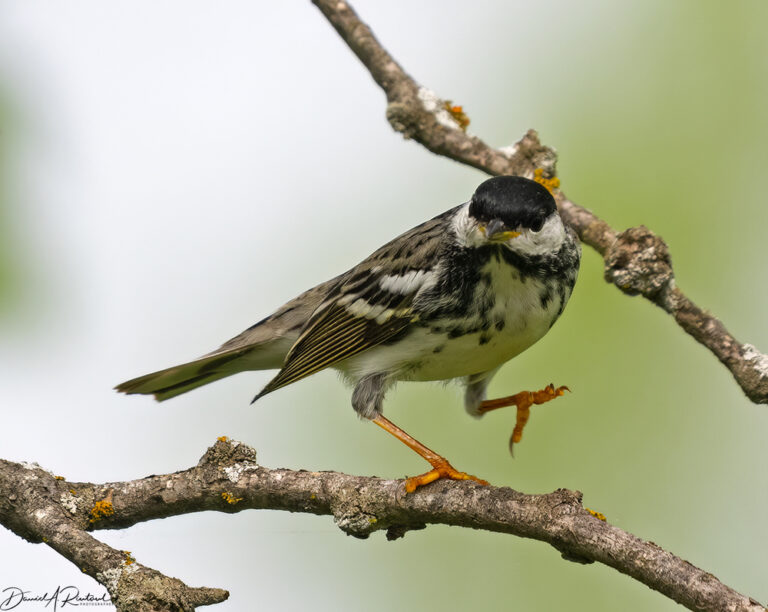
Heading even further north, to the taiga and forest/tundra transition zone, this male Blackpoll Warbler (Setophaga striata) is apparently doing his little happy dance and showing off his golden booties. This species is expected here and elsewhere in eastern North America in the spring migration, but in the fall migration they are only found on the eastern seaboard, where they take off and fly 3000 km over open ocean to the Caribbean and northern South America. They nest across Canada and all the way to the west coast of Alaska, but even those birds migrate across the continent to New England before they head south over the ocean. Click here for larger image.
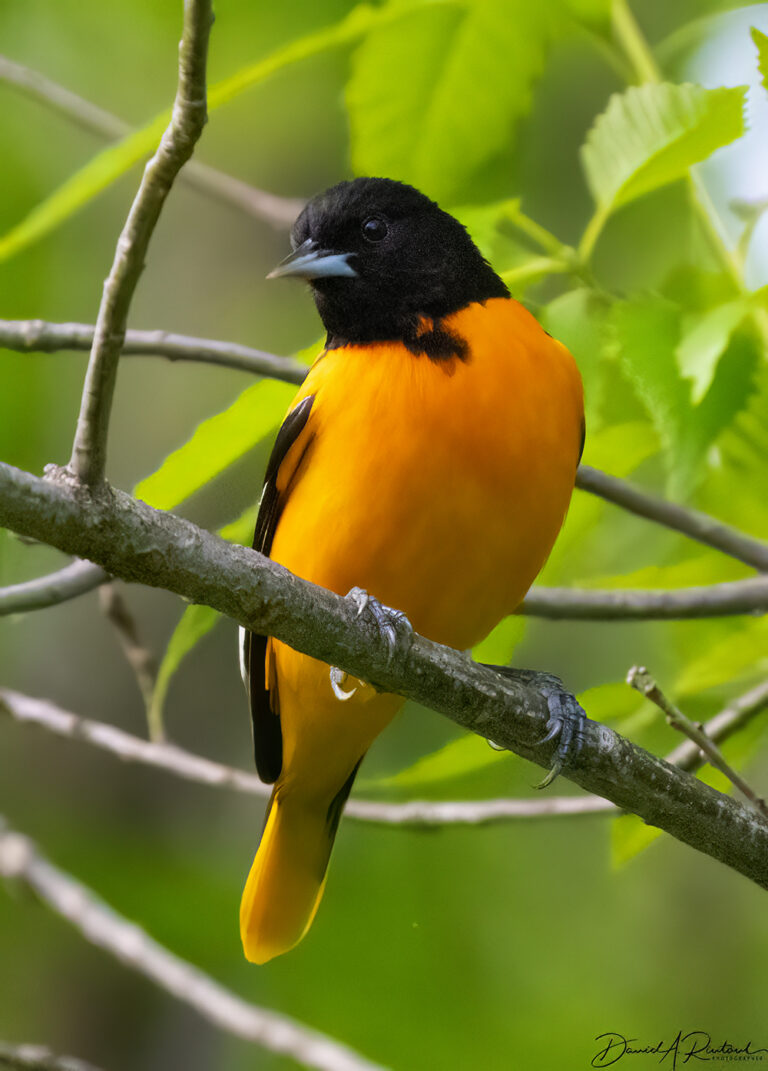
Besides warblers, one of the other colorful birds that we await here is spring would be the Baltimore Orioles (Icterus galbula). A bright orange bird that can completely disappear into a green leafy tree! And in recent years, with the advent of jelly and orange feeders, these are a popular backyard fixture in the spring. Here’s an adult (after-second-year) male, looking pretty fine. Click here for larger image.
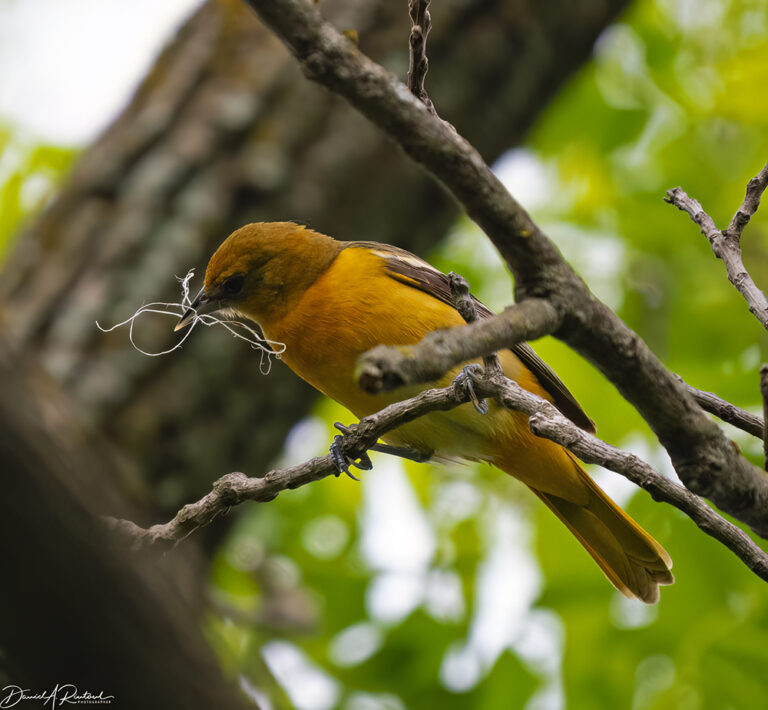
Female Baltimore Orioles are not as flashy as the males, but are still one of our more colorful summer residents. This one was gathering nesting material in our backyard. Click here for larger image.
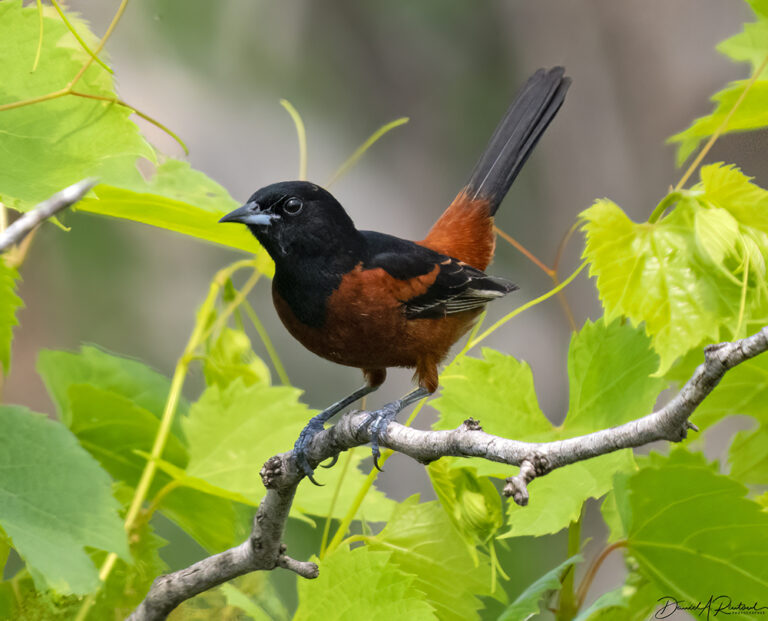
Orchard Orioles (Icterus spurius) are another elegant summer resident here, and this year they seem to be almost as common as Baltimore Orioles. You have to live east of the Rockies to be in their summer range, but within that range their cheerful whistled calls make a summer day even better. Here’s an adult (after-second-year) male cocking his tail and trying to convince me that he is actually a wren. Click here for larger image.
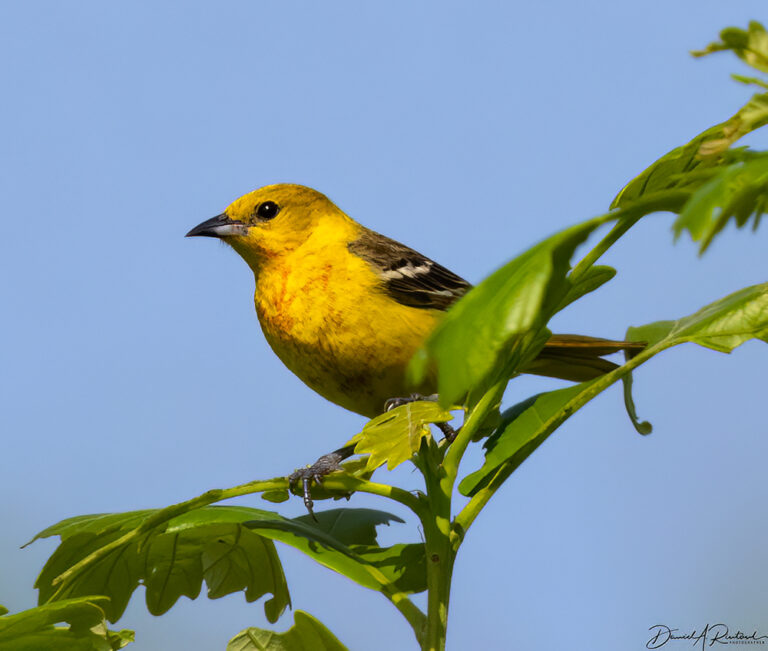
Female Orchard Orioles are lemon-yellow, and that is one way that they can be distinguished from female Baltimores, which usually have an orangish cast. This one is interesting because it shows some breast feathers that are the rusty red-orange color of the adult male. It is likely that this female is older; lots of older female birds start to show hints of male plumage characteristics, which become even more obvious as they age. Just as is the case with older human females (who might start to sprout a mustache in their later years), this is likely due to age-dependent changes in the estrogen/testosterone ratio. I think she wears it well. Click here for larger image.
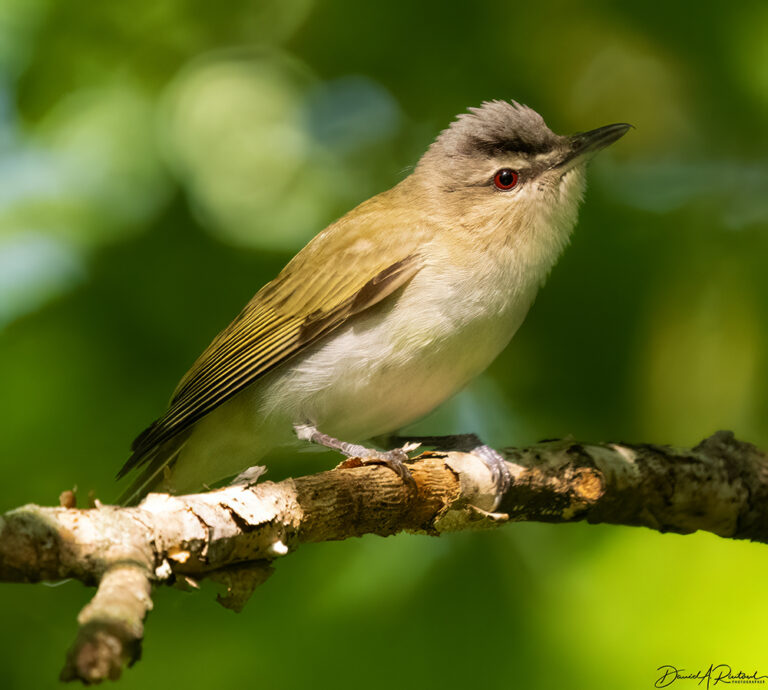
Less colorful but more vocal summer visitors here include the Red-eyed Vireo (Vireo olivaceous). As it gets hotter these will usually still be singing (even at midday) in the woods, when all of the other birds have shut up. This one is from our back yard, and he (or one of his competitors) was still singing this morning! Click here for larger image.
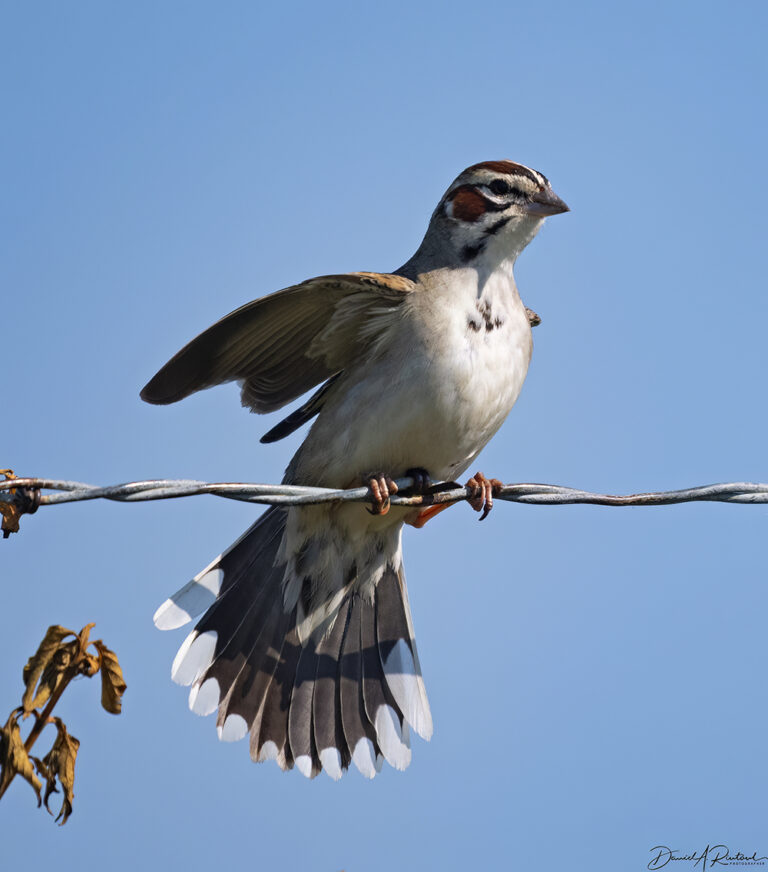
And I would be remiss if I did not include a grassland bird with all of these forest-dwellers. Lark Sparrows (Chondestes grammacus), one of the larger and more colorful sparrows in North America, inhabit the grasslands and former grasslands of the western two-thirds of the country each summer, and their buzzy trills are a constant accompaniment to the louder meadowlarks and Dickcissels who share that habitat with them. Click here for larger image.
And don’t forget to send in your pics for the Every Picture Tells A Story theme; if you are a first-time OTR contributor, you (and four other first-time contributors) will get a free 2024 Albatrossity photo calendar later in the year. Don’t delay!

JPL
Baltimore Orioles are just stunning.
sab
I don’t think I have ever seen a real live warbler. Gorgeous birds.
TriassicSands
Flashy-smashy, my vote today goes to the Red-eyed Vireo. What a cutie and I love the haircut.
Sigh, Albatrossity, don’t you ever tire of all these ugly critters? T-Rex and other therapods may have been bigger and scarier, but modern birds are incomparably beautiful. The blackpoll warbler, no big patches of red, or gold, or orange, but gorgeous nonetheless. And to fly 1,600-1,800 miles non-stop over open ocean is astounding. I read that they “tracked” four of these guys and their non-stop flight time was between 49 and 73 hours! And a water landing would be fatal. Sadly, these birds, like so many others are facing frightening population declines.
By the time humans are finished this will be a world so much poorer than the one that existed when I was born
Thank you, Albatrossity. (Your nym makes me think of another word that is more descriptive of what we’re doing — atrocity. And for every person working to save these critters there are thousands, even millions mindlessly pushing in the opposite direction.)
Mai Naem mobileI
I love bird pics and these are all such good pics. The only decent bird pics I could ever get are of pigeons. My sister calls them flying rats.
stinger
Albatrossity, I really wish you would put together a Peterson-type guide to midwestern birds, with a copy/paste of the descriptions you’ve provided here in OTR. I just want all the great photos and knowledgeable, humorous, affectionate text in one place. After all, as a fellow Midwesterner, these are my peeps!
Trivia Man
The subtle distinctions between these little birds seems overwhelming. Of course these up close and personal photos make it a lot easier to tell one from another, thanks. How much does the jizz* help you identify? Is that enough to be definite or is it still mostly a coloration question?
* http://www.arranbirding.co.uk/jizz.html
Unusual and specialized birding word, perhaps related to Gist or Gestalt. Not only a top 10,000 blog (maybe), it’s educational as well!
swiftfox
Lots of comments on the Virginia bird list serve about the lack of spring migrants. Some of this might be anecdotal, some might be disruptive weather patterns. Wonder if the spring storms funneled migrants to Kansas.
Albatrossity
@Trivia Man:
It helps a lot, especially in one’s home territory. In a foreign land, not so much; bird ID in a strange place can indeed be overwhelming!
But color is over-rated, even though lots of folks focus on it and ignore better clues such as habitat, size, behavior, structure of the bill, and jizz. In many cases you can’t see the color well (distant bird or backlit bird), but you can still easily ID it based on those other clues. In other cases the color is not exactly what it looks like in the field guide, so a person can waste a lot of time thumbing through the other options looking for some other bird. Juvenile or molting birds are prime offenders in that regard; many of those plumages are rarely, if ever, shown in field guides.
I get lots of questions about bird ID, and the questioner ALWAYS starts with color, and has often ignored better clues such as bill structure, behavior, etc. So if you are looking at a bird that you want to ID, START with structure and behavioral clues, and then look at the colors.
sab
When I was in elementary school in Florida we had a bird study phase. I was assigned the rose breasted grosbeak. I fell in love with that bird. I built a model that was 18 inches long. I didn’t get a very good grade but I didn’t care because I had discovered a wonderful new bird.
50 years later I finally saw a real one at my bird feeder in Ohio. Lovely bird, but not very big. Smaller than a robin. I see now why I got a bad grade on that bird project. But I still love that bird.
SteveinPHX
Oh wow! I’ve never seen a Chestnut-Sided Warbler before.
All of your photographs are great! Many thanks.
mvr
Lots of birds I have never knowingly seen aside from the Orioles, and I don’t see those much.
So very educational!
Thanks!
TriassicSands
Your grade probably suffered because your model was so small.
18″? Yikes!
TriassicSands
@sab:
I did a quick search using duck duck go because I wanted to see what the female looked like. Of the first 36 images, 3 were of females. Unsurprisingly, they don’t have the blazing red breast or the black head and back with contrasting white underside of the male, but they are still, to me, beautiful.
Please, tell us you saved your model and you post of photo of it.
BigJimSlade
Great set!!
Yutsano
BIRBS!!! It’s hard to pick a favourite here. So I won’t!
StringOnAStick
I always love your bird posts. Sadly I think bird flu greatly reduced the population of the more gregarious birds here last summer; we were completely over run with robin’s last spring and back to normal numbers now, plus the feeders just aren’t getting much action. Mostly I’m seeing pygmy nuthatch and scrub jays (nesting in the neighbours talk arbor vitae).
We rode bikes to the town of Sunriver, and their nature centre has a permanent pair of trumpeter swans, plus their 3 chicks right now. They even trumpeted for us; they deserve that name! Gorgeous, huge birds. I hope all the chicks survive.
Albatrossity
@StringOnAStick: Robins can be nomadic, and their number fluctuate a lot in some years, so hopefully that is the situation there. The bird flu probably did hit hard for a couple of groups of birds. One would be waterfowl (ducks and geese), which hang out in large flocks much of the year in an environment (water) that facilitates viral transmission. The other seems to be raptors, which are not flock birds but which are known to scavenge dead or dying birds. If a hawk scavenges a bird dying of bird flu, they will almost certainly get the disease as well. But I am not aware of any evidence that this flu virus had any major effect on other types of birds. That’s not to say it can’t happen, but rather that it is not obvious so far, thankfully.
We have lots of babies in the backyard this week. The Baltimore Orioles pictured above have at least three fledglings. I’ve also seen recently-fledged Blue Jays, Common Grackles, Black-capped Chickadees, House Finches, Brown Thrashers, and Tufted Titmouses using the water bath in the last couple of days.
way2blue
Albatrossity—your ‘backyard’ birds dress with the most exquisite patterns & color combinations. Reminds me a bit of tropical fish which have me wondering—why did you pick those colors & patterns? Who are you trying to impress? Or hide from…